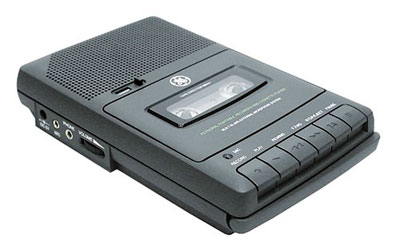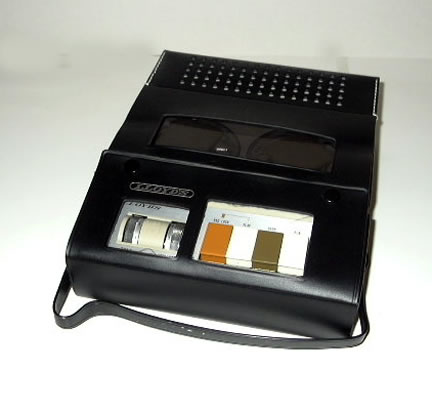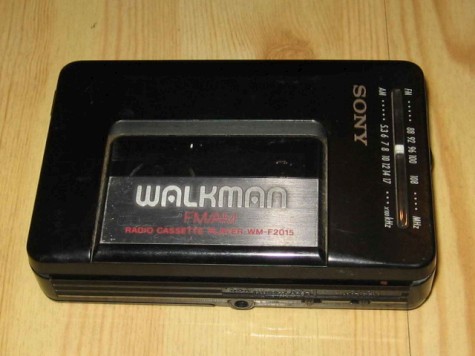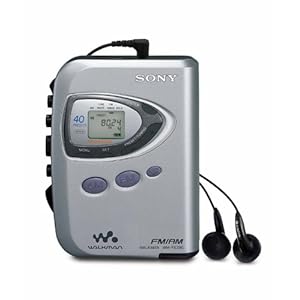Cassette Players
In 1935, decades before the introduction of the Compact Cassette, AEG released the first reel-to-reel tape recorder (in German: Tonbandgerät), with the commercial name "Magnetophon", based on the invention of the magnetic tape (1928) by Fritz Pfleumer, which used similar technology but with open reels (for which the tape was manufactured by BASF). These instruments were still very expensive and relatively difficult to use and were therefore used mostly by professionals in radio stations and recording studios. For private use the (reel-to-reel) tape recorder was not very common and only slowly took off from about the 1950s; with prices between 700 and 1500 DM (which would now be about 1600 to 3400 €)[4] such machines were still far too expensive for the mass market and their vacuum tube construction made them very bulky. In the early 1960s, however, the weights and the prices dropped when vacuum tubes were replaced by transistors. Reel-to-reel tape recorders then became more common in household use, though never but a small fraction of the number of homes using long playing record disc players.
In 1958, following four years of development, RCA Victor introduced the stereo, quarter-inch, reversible, reel-to-reel RCA tape cartridge.[5][6] It was a cassette, big (5" × 7"), but offered few pre-recorded tapes; despite multiple versions, it failed.
In 1962 Philips invented the compact audio cassette medium for audio storage, introducing it in Europe in August 1963 (at the Berlin Radio Show),[2][7][8][9][10] and in the United States (under the Norelco brand) in November 1964, with the trademark name Compact Cassette.
Although there were other magnetic tape cartridge systems, the Compact Cassette became dominant as a result of Philips' decision in the face of pressure from Sony to license the format free of charge. Philips also released the Norelco Carry-Corder 150 recorder/player in the U.S. in November 1964. By 1966 over 250,000 recorders had been sold in the US alone and Japan soon became the major source of recorders. By 1968, 85 manufacturers had sold over 2.4 million players.[11]
In the early years, sound quality was mediocre, but it improved dramatically by the early 1970s when it caught up with the quality of 8-track tape and kept improving.[2] The Compact Cassette went on to become a popular (and re-recordable) alternative to the 12-inch vinyl LP during the late 1970s
In 1958, following four years of development, RCA Victor introduced the stereo, quarter-inch, reversible, reel-to-reel RCA tape cartridge.[5][6] It was a cassette, big (5" × 7"), but offered few pre-recorded tapes; despite multiple versions, it failed.
In 1962 Philips invented the compact audio cassette medium for audio storage, introducing it in Europe in August 1963 (at the Berlin Radio Show),[2][7][8][9][10] and in the United States (under the Norelco brand) in November 1964, with the trademark name Compact Cassette.
Although there were other magnetic tape cartridge systems, the Compact Cassette became dominant as a result of Philips' decision in the face of pressure from Sony to license the format free of charge. Philips also released the Norelco Carry-Corder 150 recorder/player in the U.S. in November 1964. By 1966 over 250,000 recorders had been sold in the US alone and Japan soon became the major source of recorders. By 1968, 85 manufacturers had sold over 2.4 million players.[11]
In the early years, sound quality was mediocre, but it improved dramatically by the early 1970s when it caught up with the quality of 8-track tape and kept improving.[2] The Compact Cassette went on to become a popular (and re-recordable) alternative to the 12-inch vinyl LP during the late 1970s
Cassette Players
Cassette Players
Cassette Players
Cassette Players
Cassette Players
Cassette Players
Cassette Players
Cassette Players
Cassette Players








No comments:
Post a Comment